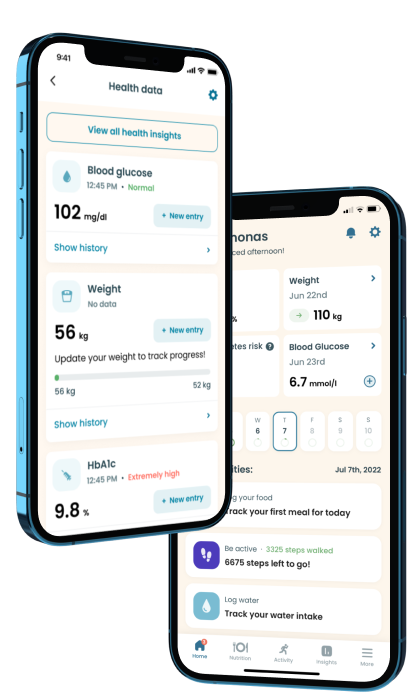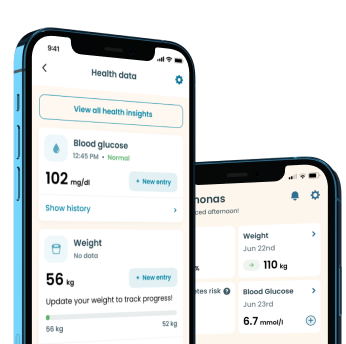Giloy and Diabetes

Due to the nature of diabetes and the increase in its incidence, it’s no surprise that it is a subject of continual research. Although various medications exist for the optimal management of this condition, health specialists are continually looking towards food substances as replacements or supplements for these drugs. One of the foods that have shown potent antidiabetic functions recently is giloy (the heart-leaved moonseed).
What Is Giloy?
Giloy (Tinospora cordifolia) is a climbing shrub popularly known for its medicinal functions against a wide range of conditions, including fever, infections, and diabetes, as well as its role in supporting general body wellness.
Although its role in managing blood sugar levels is known to many, what does science say about this herbaceous vine? To present a definite answer to this inquiry, we’ll analyze existing research on giloy and diabetes.
Giloy’s Nutritional Benefits
Giloy provides various health benefits, according to research and popular opinion. However, it's worth noting that most studies looked at the effects of this medicinal herb on rats or lab cells. This presents controversies on its effectiveness in humans (i.e., whether these effects can be successfully extrapolated to humans).
Antidiabetic Function
While giloy has already been observed to improve blood sugar levels in people with type 2 diabetes, further research has led to more specific discoveries. According to these studies, giloy exhibits antidiabetic effects primarily due to its chemical composition comprising tannins, alkaloids, tannins, flavonoids, cardiac glycosides, saponins, etc.
One Journal of Enzyme Inhibition and Medicinal Chemistry study examines the alpha-glucosidase inhibitory effect of giloy in albino rats — a potent means of treating diabetes. Notably, 15 mg of dichloromethane (DCM) stem extract of giloy yielded the most effective results, including a 100% inhibition of alpha-glucosidase, an 83% inhibition of pancreatic amylase, and a 75% reduction of salivary amylase.
Consequently, administering maltose with the DCM giloy extract reduced the anticipated glycemic response in normal and diabetic animals by 50% and 58%, respectively.
Rich in Berberine
Giloy has been found to exhibit hypoglycemic functions owing to its berberine content. More importantly, berberine has been shown to have similar effects as metformin — an antidiabetic medicine.
In a three-month trial where 36 type 2 diabetes patients were randomly treated with 0.5 g of either metformin or berberine, the latter yielded comparable blood glucose reducing effects as the former. Notable effects include a 7.5% reduction in glycated hemoglobin (HbA1c), a 6.9% decrease in fasting glucose, and an 11.1% decline in postprandial glucose levels.
Another meta-analysis covering 21 clinical trials found that berberine has beneficial effects on hypertension, hyperlipidemia, and type 2 diabetes mellitus.
High Antioxidant Content
The antioxidant impact of giloy is another beneficial effect noted by scientists. Methanol preparations of the giloy stem, when taken orally, have been found to boost erythrocyte membrane catalase and lipid peroxide activity.
Giloy extracts have also been shown to have potent free radical scavenging abilities against superoxide anions, hydroxyl radicals, and other free radicals that may cause diabetes as well as its complications.
Potential Risks of Giloy to Diabetics
Giloy does not pose significant risks to healthy individuals as long as it’s consumed in moderation and in line with the dose specified in the product label or recommended by a health specialist. However, consuming this medicinal herb might not be the best option for some individuals, especially those living with diabetes.
Due to the instability of diabetes, people living with the ailment mostly have to take diabetes medication. However, since giloy offers potent hypoglycemic functions, consuming it alongside antidiabetic medicines might cause a low blood sugar reaction.
How Can a Diabetic Consume Giloy?
Giloy boasts several health benefits aside from its antidiabetic functions, such as improved immunity and reduced stress. However, you should exercise caution if you’re on existing diabetes medications. If you seek ideas on how you can use/consume giloy, the following tips should be of help:
-
Chew on raw giloy stem
- Drink giloy shot mixed with black salt, ginger, and alma
- Enjoy giloy with some milk and ginger
- Boil giloy stem and drink the water as juice
- Apply giloy extract to eyes for improved vision
Take a quiz
Discover what Klinio app can do for you
Healthy diabetes meal plan crafted just for YOU

Personalized workouts with no equipment needed

Track your progress with smart tracking tools

Summary
Giloy has been successfully employed as a traditional medicine for some time now. It boosts the immune system and reduces the risks that come with diabetes due to its antioxidant component. While research on giloy and diabetes proves these benefits to be accurate, you must contact a health specialist on how best to consume giloy to avoid potential health issues.

Download Klinio app!
Get more by downloading our free Klinio App. Analyze your health, form new habits and manage your diabetes anytime, anywhere.
OR
SCAN QR CODE



GET THE APP











